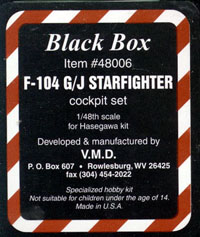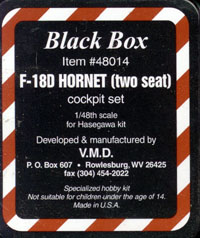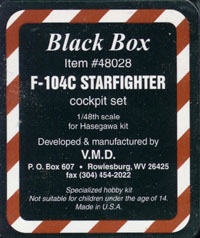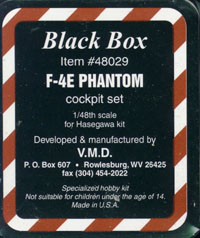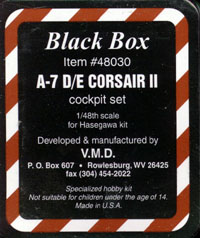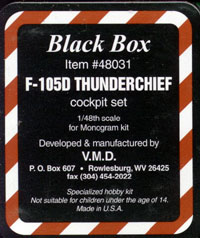| Richard Marmo's SCALEWORLD |
DANGER! Harmful or fatal if swallowed.
Flammable liquid and vapor.
Contains: Petroleum Distillates.
Vapor harmful. May affect the brain or nervous system causing dizziness, headache or nausea. Causes eye, skin, nose and throat irritation.
Notice: Reports have associated repeated and prolonged occupational overexposure to solvents with permanent brain and nervous system damage. Intentional misuse by deliberately concentrating and inhaling the contents may be harmful or fatal. Keep away from any heat, sparks and flame. VAPORS MAY CAUSE FLASH FIRE. Do not smoke. Extinguish all flames and pilot lights and turn off all stoves, heaters, electric motors and other sources of ignition during use and until all vapors are gone. Prevent build-up of vapors by opening all windows and doors to achieve cross-ventilation.
USE ONLY WITH ADEQUATE VENTILATION
Do not breath vapors or spray mist. Ensure fresh air entry during application and drying. If you experience eye watering, headaches or dizziness, increase fresh air or wear respiratory protection (NIOSH/MSHA 23C or equivalent) or leave the area. Close container after each use. Avoid contact with eyes, skin and clothing. Wash thoroughly after handling.
FIRST AID: If you experience difficulty in breathing, leave the area to obtain fresh air. If continued difficulty is experienced, get medical assistance immediately. In case of eye contact, flush with plenty of water for at least 15 minutes and get medical attention; For skin, wash thoroughly with soap and water. If swallowed do not induce vomiting. Call physician immediately.
KEEP OUT OF THE REACH OF CHILDREN.
Does the above warning sound familiar? It should because, in one form or another, it shows up on just about every chemically based product that we use in the pursuit of modelbuilding. That even applies to water-based acrylic paint, though that warning is limited to keeping the stuff away from children, advising you not to ingest it and to call a physician immediately if you do.
Those various warnings, if taken absolutely literally, would bring modelbuilding to a screaming halt. Think about it. If you turned off all possible sources of ignition, you'd wind up trying to paint in conditions that imitated either a meatlocker or blast furnace, depending on the time of year. And you certainly wouldn't be using an airbrush. That requires a compressor which is driven by…you guessed it…an electric motor! You also want to take the precaution of having a meal prior to a painting session. Otherwise, hunger pangs could force you to swallow, eat, chew or otherwise ingest the paint. Definitely not recommended! In order to minimize the health hazard, does this mean we should have our Doctor's phone number tattooed on our wrists in case we decide to make a main course out of a bottle of RLM Grau?
In order to keep all these dangerous paints, thinners and putties away from children, it's also going to be necessary to surround our hobby area with an 8-foot chain link fence, then secure the gate with a combination lock whose numbers are kept secured in a safe deposit box. Considering that one of the goals of modelbuilding is to encourage the participation of children and teenagers, wouldn't you say that being warned to keep the stuff away from children is somewhat of an oxymoron?
While it's certainly desirable to use reasonable care and caution around anything that can cause you harm, there is such a thing as taking things to an extreme. What do you think?
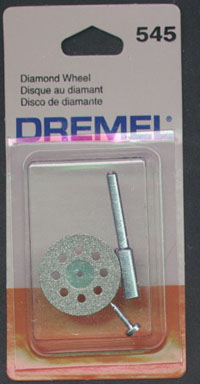 As long as we're discussing safety precautions, check out one of the latest additions to the DREMEL (www.dremel.com) line. You're all familiar with their frangible (breakable) carbide cutting wheel. God knows I've used enough of'em. They're ideal for carving up styrene kits when you're doing conversions, cutting brass tubing, separating resin parts from their sprues and so on. The one problem is that you go thru a bunch of'em because they do exactly what they're designed to do…break. Jam them in a cutting kerf, twist them or drop them and you'll be reaching for a replacement. Well, no more.
As long as we're discussing safety precautions, check out one of the latest additions to the DREMEL (www.dremel.com) line. You're all familiar with their frangible (breakable) carbide cutting wheel. God knows I've used enough of'em. They're ideal for carving up styrene kits when you're doing conversions, cutting brass tubing, separating resin parts from their sprues and so on. The one problem is that you go thru a bunch of'em because they do exactly what they're designed to do…break. Jam them in a cutting kerf, twist them or drop them and you'll be reaching for a replacement. Well, no more.
DREMEL now offers their #545 Diamond Wheel. Diamond Wheel??? What they've done is take a metal wheel the same size as the carbide wheel, pierced it with eight holes (presumably to enhance cooling) and coated the whole thing with diamond dust. The result is a cutting wheel that does what the carbide wheels do, but without the disadvantages.
Although it carries an MSRP of $20, for which you get a single cutting wheel and mandrel to mount it on, the price is a bargain. Doubt me? I've been using one for the last couple of months…the same one. During that time, I've chopped up a 1/32 Revell P-38J in order to convert it to a P-38F, cut numerous pieces of brass tubing, resin, wood, even used the face of it to sand and shape. It's been jammed in a saw kerf, even dropped. And it cuts thru 1/8 thick plexiglas like butter. So far, it hasn't bent, twisted or even chipped. In short, it took me about 30 seconds of use to totally abandon my old, reliable, frangible carbide cutting wheels. Use this Diamond Wheel one time and you'll reach the same conclusion.
CORRECTION: In the January Scaleworld, I stated that the Italeri U-2R "Senior Span" kit was the ultimate stretch of the original Hawk U-2A. Pure and simple, I blew it. It didn't take long for Tom Gaj to take me to task over it. So I turned around and contacted Lewis Nace at TESTORS to get things straight. His response was "The kit is a "re-release". Tom is correct, and well informed. The kit is not a re-tool of the earlier U-2. But it is a re-release from the U-2 strech tooling done in the 80's."
So there you have it. Senior Span is a repop of original 1980s ITALERI tooling.
BLACK BOX continues to expand their line of quality cockpit interior detail sets. Those of you who have used BLACK BOX sets know what to expect. If you haven't, suffice to say that quality is excellent and all the detail you want is there. The lastest six are all in 1/48 scale and, with the exception of one intended for a Monogram kit, are designed for Hasegawa releases. They are:
BB48006: F-104G/J Starfighter cockpit for the Hasegawa kit, $20.00. Kit includes both the Martin Baker I-Q7 and the C-2 ejection seats, allowing you to accurately replicate the early German F-104Gs and later Italian F-104S variants. You also get a pair of underwing fuel tanks, complete with tail fins and pylons...and a pilot figure.
BB48014: F-18D Hornet (two seat) cockpit for the Hasegawa kit, $20.00. Two seats, two tubs, all necessary side panels, excellent instructions.
BB48028: F-104C Starfighter cockpit for the Hasegawa kit, $16.00. C-2 ejection seat, five excellent references listed, usual quality instructions.
BB48029: F-4E Phantom II cockpit for the Hasegawa kit, $20.00. Two-seat, one piece cockpit tub, all necessary detail parts to create an appropriately busy office, appropriate instructions. This kit also includes one of their tip sheets. Mine is tip #21 that describes how to match an airfoil to a wing root, thus minimizing or eliminating filling and/or sanding.
BB48030: A-7D/E Corsair II cockpit for the Hasegawa kit, $18.00. What can I say without repeating myself…repeating myself…repeating myself… Excellent seat, one piece cockpit tub, delicate details, ejection seat brackets, cockpit hood actuator, thorough instructions. If Mike Kirchoff keeps this up, we'll concentrate on the cockpit as the model and consider the rest of the aircraft an afterthought.
BB48031: F-105D Thunderchief cockpit for the Monogram kit, $16.00. Got a Monogram F-105D kit ratholed that you'd like to build if you could put a better cockpit in it? Now you can. Seat, tub, side panels, everything you need. Excellent instructions, which is a good thing because it's a tight fit. You're told to sand the fuselage walls as thin as possible. Even then, it's gonna be cut & try and the instructions tell you this.
Those of us who fervently followed the comic-strip adventures of that jut-jawed, hawk-nosed gumshoe, Dick Tracy (and were also science fiction nuts..ahem..enthusiasts), became even more devoted fans with the advent of his magnetic space coupe, along with a buxom, scantily clad Moon Maid (who eventually married Junior).
An indication of the popularity of the strip was evidenced when AURORA released a kit of the Dick Tracy Magnetic Space Coupe, complete with a moon surface base and figures of Diet Smith, Dick Tracy, Moon Maid and Junior. Granted, it required a total suspension of reality when you saw all four characters standing on the lunar surface in street clothes, paying no attention at all to the surrounding vacumn that should've killed them in three seconds. But hey! It was a comic-strip. The characters could do whatever they wanted and it made perfect sense for them.
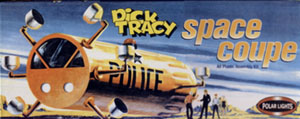 At any rate, the kit (which was somewhere around 1/72 scale, based on the figures) hasn't been seen anywhere but kit collector's closets for the last couple of decades or so. Til now. POLAR LIGHTS (https://www.polarlights.com) has recently added the Dick Tracy Magnetic Space Coupe to their line of Aurora repops. And they've maintained the familiar retro appearance where the box and instructions are concerned. Price is a most reasonable $16.99.
At any rate, the kit (which was somewhere around 1/72 scale, based on the figures) hasn't been seen anywhere but kit collector's closets for the last couple of decades or so. Til now. POLAR LIGHTS (https://www.polarlights.com) has recently added the Dick Tracy Magnetic Space Coupe to their line of Aurora repops. And they've maintained the familiar retro appearance where the box and instructions are concerned. Price is a most reasonable $16.99.
There are some 49 parts in this kit, molded in a light cream/beige styrene and all contained in two bags. Instructions and decals are tossed in loose, which is not a problem. As you would expect in this kind of repop, you should have little trouble with assembly. It will take a bit longer than you think, mainly due to the arms that support the magnetic thrusters. Each of the arms are molded in halves, which leaves you with more than the usual number of seams to clean up.
Color scheme is simplicity itself, but follow the instructions and not the boxtop. The Space Coupe is overall bright yellow with details following the instruction's color chart. Use your imagination or photos from the Apollo missions to detail the moon base. Incidentally, this is a 3-D representation of a comic-strip. The idea is to paint it so that it looks like a comic-strip. Bold colors, high-contrast highlights, etc. If you happen to live near a major library, try to track down some of the Sunday papers from the 50s and 60s and take a look at the actual comic-strip so you can see the effect you're trying to emulate.
If you already have the Dick Tracy figure from POLAR LIGHTS, Dick Tracy's Magnetic Space Coupe is a must.
As long as we're talking about POLAR LIGHTS kits, let's look at another one that's as different from the Space Coupe as night from day. If you like NASCAR racing, particularly the late 60s period, you'll love this one. To 1/25 scale, PL has produced a georgous kit of the 1969 Cale Yarborough Mercury Cyclone Spoiler II. Today's NASCAR cars look like clones. At 180 mph, you're hard pressed to tell the difference between a Ford and a Pontiac. In the 60s, cars had character and even the most uninformed person could tell one car from another.
 Carrying a price tag of $17.99, this kit is a jewel. For one thing, the box is crammed. I don't think they could've gotten anything else in there if they had to. Speaking of boxes, everything is packed in a conventional top over bottom box and all parts are bagged…except one. Chrome parts get their own bag, clear parts another. All remaining parts, including hollow vinyl tires, reside in a third. Then there's that one exception…the body. It literally has it's own garage, in the form of a heavy cardboard sleeve, to keep it safe! Instructions are loose in the bottom of the box with a large waterslide decal sheet safely tucked into it's folds. Lord, I love this kind of packaging. Pity that more manufacturers don't take a lesson from it.
Carrying a price tag of $17.99, this kit is a jewel. For one thing, the box is crammed. I don't think they could've gotten anything else in there if they had to. Speaking of boxes, everything is packed in a conventional top over bottom box and all parts are bagged…except one. Chrome parts get their own bag, clear parts another. All remaining parts, including hollow vinyl tires, reside in a third. Then there's that one exception…the body. It literally has it's own garage, in the form of a heavy cardboard sleeve, to keep it safe! Instructions are loose in the bottom of the box with a large waterslide decal sheet safely tucked into it's folds. Lord, I love this kind of packaging. Pity that more manufacturers don't take a lesson from it.
So what about the kit itself? In a word, if you like 60s vintage NASCAR rigs, you'll want this one. All parts are molded in white styrene (except for the clear parts and tires) with all parts crisp, clean, well detailed and possessing very little, if any, flash. Although I lost count, there's well over 100 parts. Instructions are very thorough and include a lengthy paint chart that's keyed to TESTOR and MODEL MASTER paint. Also included are two engines, both a 429 and 427, providing you with a powerplant option. Obviously, you'll have to do a little research as to where the 427 was used, since the decals are geared to #21 which was powered by a 429.
If you want an indication of what kind of impression this kit made on me, consider that I don't care that much for cars (unless a client orders a model for his collection or a magazine wants an article/column) and even less for NASCAR types. Despite that, this kit has me seriously thinking about building it. 'Nuff said. Go buy one.
Build ships, particularly sailing ships? Then you'll want to check out a recent book from NAVAL INSTITUTE PRESS (https://www.usni.org). The Period Ship Handbook 3 by Keith Julier used 190 pages of an 8 1/2 x 11 3/4 inch oversize format to guide you 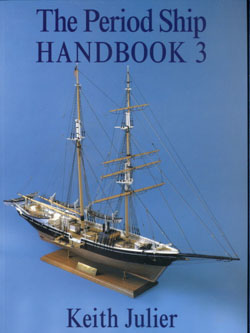 through a series of ship kits. Keep in mind that these are not plastic or even resin kits. They're wood, most of them produced by overseas manufacturers (such as Constructo and Mamoli, to name a couple). Some are solid hull, while others are plank over frame, built exactly as the real ship was. And they're all rigged, most of'em full-rigged sailing ships.
through a series of ship kits. Keep in mind that these are not plastic or even resin kits. They're wood, most of them produced by overseas manufacturers (such as Constructo and Mamoli, to name a couple). Some are solid hull, while others are plank over frame, built exactly as the real ship was. And they're all rigged, most of'em full-rigged sailing ships.
The book is loaded with large (most are 1/3 to 1/2 page in size), clear black-and-white photos that allow you to see all the detail. Each chapter contains a detailed, running narrative relating to the chapter's subject. And there are four pages of excellent color photos showing the finished models.
As with most books on model construction, no one book can be all things to all modelers. Nor should they. Keith Julier assumes that modelers reading this book have a reasonable knowledge of ship modeling basics and I have absolutely no argument with that. Keep in mind that the number 3 is in the title, meaning that two other books have preceeded this one. It's the early volumes where basic construction should be addressed. Besides, it isn't practical to repeat the absolute basics in every book. Do that and there wouldn't be enough room to showcase the more advanced information.
Having said that, Keith has done an excellent job of describing model ship construction in such a way that even the rank beginner will be able to read this particular book and learn from it. And NAVAL INSTITUTE PRESS has kept the price at a reasonable $34.95. You can't ask for more than that.
See y'all next month. Assuming I can make the deadline again!
